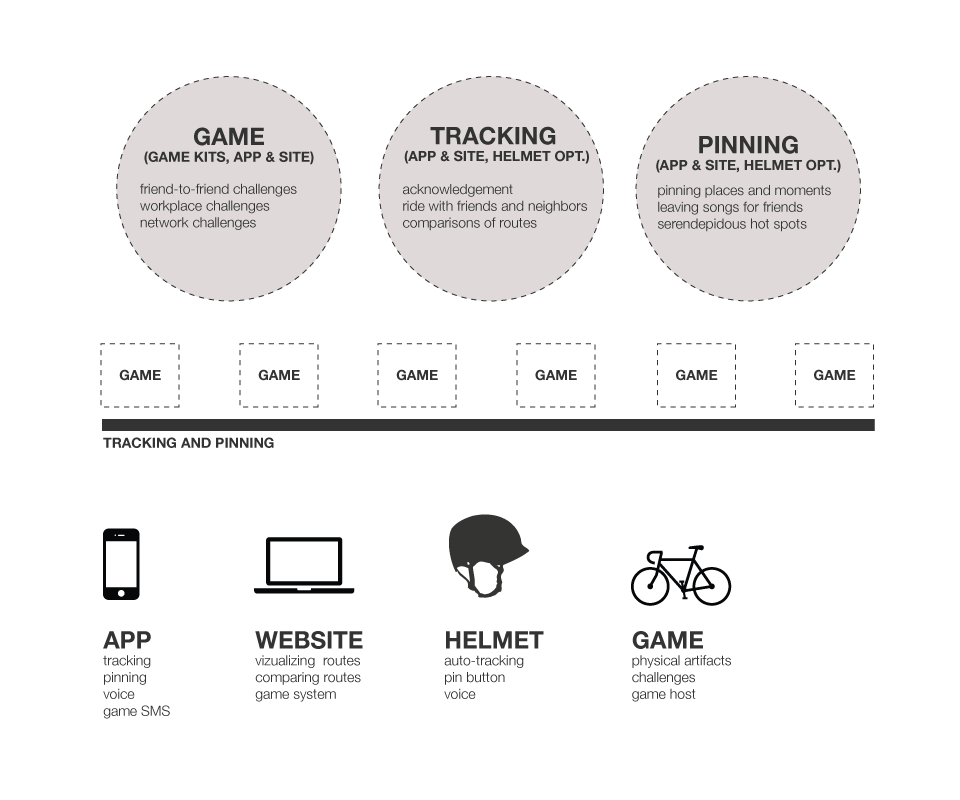STYLE GUIDE ELEMENTS
title
logo
tagline (baby)
service offering
copy nuggets (commentary)
- weather
- how you’re doing
- what your friends are doing
- neighborhood facts
weather (right now in New York)
style guide
- buttons
- sliders
- profiles
- callouts
color palette
- background
- text, etc
- color guide for riders
map
- neighborhoods
- photo share
poster
- data comparisons
- statistics
- over time
- distance
- hood info
- progress over time
global elements
- header
- footer
Brand name: The name of your company or service.
–
Overview: A short overview of your brand‘s personality. What makes your brand personality unique?
–
Personality image: This is an actual image of a person that embodies the traits you wish to include in your brand. This makes the personality less abstract. Pick a famous person, or a person with whom your team is familiar. If your brand has a mascot or representative that already embodies the personality, use that instead. Describe the attributes of the mascot that communicate the brand’s personality.
–curious, charming, practical, quirky, playfully competitive, approachable, unassuming, classic, simple, intriguing, in touch with the city as a local with facts, witty, chill, driven, respectful, Bill Cunningham, Stephen Fry, Jamie Oliver, Anthony Bordain (Eataly), daring, Gorilla coffee, sophisticated.
Not: Intense, bossy, show-offy, insistent, two moon.
Brand traits: List five to seven traits that best describe your brand along with a trait that you want to avoid. This helps those designing and writing for this design persona to create a consistent personality while avoiding the traits that would take your brand in the wrong direction.
Personality map: We can map personalities on an X / Y axis. The X axis represents the degree to which the personality is unfriendly or friendly; the Y axis shows the degree of submissiveness or dominance.
Voice: If your brand could talk, how would it speak? What would it say? Would it speak with a folksy vernacular or a refined, erudite clip? Describe the specific aspects of your brand’s voice and how it might change in various communication situations. People change their language and tone to fit the situation, and so should your brand’s voice.
Copy examples: Provide examples of copy that might be used in different situations in your interface. This helps writers understand how your design persona should communicate.
Visual lexicon: If you are a designer creating this document for yourself and/or a design team, you can create a visual lexicon in your design persona that includes an overview of the colors, typography, and visual style that conveys your brand‘s personality. You can be general about these concepts, or include a mood board.
Engagement methods: Describe the emotional engagement methods you might use in your interface to support the design persona and create a memorable experience. We‘ll learn more about these in the next chapter.


